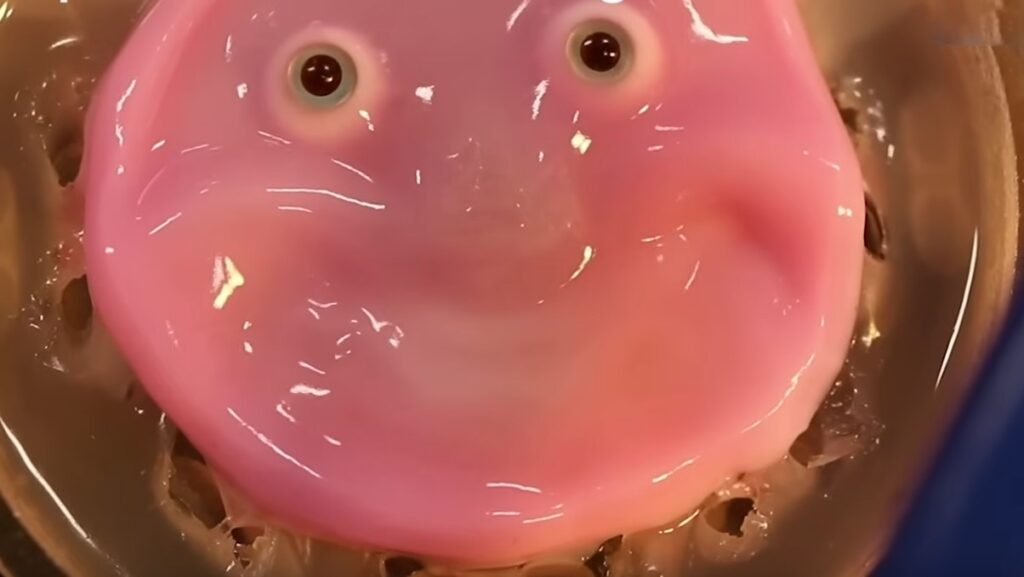- Web Desk
- Dec 03, 2025
Nightmarish smile: Japanese scientists make robot with living skin
-

- Web Desk
- Nov 01, 2024

WEB DESK: In some bizarre inventive scheme right out of a Monty Python sketch, Japanese scientists decided to do things a little – well, differently.
What, you may wonder, one of the world’s most advanced and technologically innovative countries has to offer as we face possible mass extinction from climate change?
Slapping a living skin onto robotic faces, of course! Exactly what the world needed!
Read more: Christopher Columbus dig-up: Who doesn’t love to be exhumed for DNA analysis?
Japanese scientists hoped to see their beloved robots smile like real humans – except the part where the end result looks like a ghastly Frankenstein monster experiment gone wrong.
Researchers at the University of Tokyo took human skin cells, shaped them into a humanoid face and summoned the smile-demon right out of the “Smile” horror movie.
The result was something akin to, well, this!

The lead researcher, Shoji Takeuchi, was very, very proud of his Frankenstein monster creation. He hailed the 19th-century-literary-monster invention as a ‘breakthrough’.
Takeuchi argued passionately that the ‘innovative’ method was a mammoth leap toward creating robots that look ‘lifelike’.
“By integrating these actuators and anchors, we have achieved the ability to control living skin for the first time”, he declared happily.
In a lab that looks nothing like what Mary Shelley imagined, another researcher showed off a face mold draped in human skin tissue.
The ‘smiling robot’ was mentioned in a study published in “Cell Reports Physical Science”. The end product is a result of a long, laborious, decade-long efforts to embrace Lovecraftian horror in real life.
The lead researcher had more to add for his brainchild. He explained the ‘perks’ of using living tissue over artificial materials. “Living tissue provides energy efficiency similar to that of brains and muscles, along with a unique capability of self-repair”.
The team decided one Lovecraftian horror invention wasn’t enough. It needs to go to Diablo levels of messed up and creepy. Takeuchi and his team talked of adding more features to their lab-grown skin – circulatory system and nerves. Now this is a stuff of nightmares!
At least there seems a small light at the end of this creepy, gothic tunnel. The Japanese researchers acknowledged the creepy factor of their invention.
“Creating robots from the same materials as humans and enabling them to express similar emotions may be key to overcoming the uncanny valley” the enthusiastic Dr Frankenstein declared.
And just as we had begun to heave a sigh of relief!
That’s not all. The researchers crooned over how to make robots more ‘lifelike’ – by adding surface wrinkles and a thicker epidermis. “In this study, we successfully replicated human features to some extent by crafting a face with the same surface material and structure as humans”.
I guess we all wanted multiple clones of Donatella Versace around!
The biggest question, though, is how they did it? The science behind “creepy smile robot” involves layering lab-grown skin onto a robotic skeleton using collagen gel filled with cultured human dermal fibroblasts.
Read more: Smile 2 creeps to an impressive $2.5m at the box office
This allows the artificial skin to move with the underlying mechanics – a network of tiny, V-shaped perforations that prevent tearing or peeling.
Let’s give Mr Takeuchi credit where its due! Before we entered gothic, Lovecraftian, Frankenstein horror worlds, the Japanese scientist and his team made headlines of a different kind – creating skin that can heal itself, and developing small robots with biological muscle tissue.




